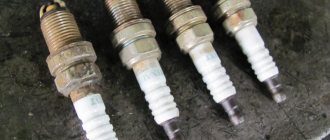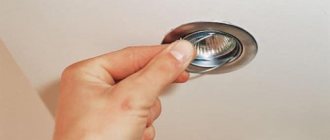How to magnetize a magnet at home
For many people, a magnet is still a mystery, although in principle people became acquainted with this metal and phenomenon a very long time ago.
Even then, a whole system for the production of various magnets was developed. Today this is far from uncommon, and even powerful magnets can be made at home. Making a magnet using improvised materials
Of course, for many this will even seem like something supernatural and may even be a shock, but even now, sitting at home, most people can make a magnet with their own hands. Below are four methods that describe how to make a powerful magnet at home.
The first and probably therefore the simplest method: to implement it, you just need to take any object that can be magnetized (the object must be metal) and move it several times along a permanent magnet, and this should be done only in one direction. But, unfortunately, such a magnet will be short-lived and will very quickly lose its magnetic properties.
This magnetization method is performed using a 5 or 12 volt battery or accumulator. Most often it is used for magnetizing screwdrivers and is performed as follows:
• A copper wire of a certain length is taken, which will be enough to wrap the screwdriver shaft 280 - 350 times. The wire from transformers, or the one intended for their production, is best suited. • The object is insulated; in this case, the entire shaft of the screwdriver is wrapped using electrical tape. • The winding itself is carried out and connected to the battery. One end is to the plus, the other to the minus. The winding should be carried out turn to turn, evenly. The insulation must also be tight.
As a result of these manipulations, it will be much more pleasant to work with a screwdriver. This operation can turn any old unnecessary screwdrivers into a truly convenient tool.
This option describes how to make a powerful magnet in a fairly simple way. In fact, it has already been fully described above, but this particular method involves a different material. In this case, ordinary metal will be used, or rather a small piece of it, preferably cubic in shape, and a more powerful coil. Now the number of turns needs to be increased 2-3 times for magnetization to be successful.
This method is very dangerous and is strictly prohibited for use by people who are not electrical professionals. It is carried out strictly in compliance with safety precautions, the main thing is to remember that only you and no one else bears responsibility for life and health.
He talks about how to make a strong magnet at home, while spending a small amount of money. In this case, an even more powerful coil, wound exclusively from copper, will be used, as well as a fuse for a 220-volt network.
The fuse is needed so that the coil can be turned off in time. Immediately after connecting to the network, it will burn out, but during this period of time it will have time to go through the magnetization process. The current strength in this case will be maximum for the network and the magnet will be quite powerful.
DIY powerful electromagnet
First, you need to figure out what it is. An electromagnet is a whole device that, when a certain current is supplied to it, works like a regular magnet. Immediately after cessation, it loses these properties. How to make a powerful magnet from an ordinary coil and iron was described above. So, if you use a magnetic circuit instead of iron, then you will get exactly the same electromagnet.
In order to figure out how to make a strong magnet at home that will work from the network, you just need to remember a little information from the school physics course and understand that as the coil, as well as the magnetic circuit, increases, the power of the magnet will also increase. But this will require more current to reveal the full potential of the magnet.
But neodymium remains the most powerful; they have all the most desirable properties and, despite their strength, are small in size and weight. How to make neodymium magnets with your own hands and whether it is even possible will be discussed further.
Making a neodymium magnet
Due to the complex composition and special production method, the question of how to make a neodymium magnet with your own hands at home disappears by itself. But many are still interested in how to make neodymium magnets, because it would seem that if you can make an ordinary magnet, then it is also quite possible to make a neodymium one.
But everything is not as simple as it seems in reality. Serious companies are engaged in the production of such magnets; they use special technologies for very powerful magnetization of the material. And this is in addition to the fact that an alloy that is quite difficult to extract and produce is used. Therefore, the answer to this question can be clearly - no way. If someone manages to do this, then he can easily open his own production, since he will already have the necessary equipment.
Application of created magnets
Application for industrial and economic purposes
Used in various electrical appliances. They are especially common in devices equipped with speakers. Any dynamic head includes a magnet, ferrite or neodymium; in rare cases, others are also used. Magnets are also used in furniture production and toys. In production, when filtering bulk materials.
Use at home
Refrigerator magnets are one of the most common uses of magnets. Also, some use them to stop meters in order to reduce utility bills, but doing so is strictly prohibited and inappropriate.
Based on this article, you can understand how to make a powerful magnet at home, without spending any special effort or material resources. But people who do not understand electricity and generally have no idea how it works should not experiment with a powerful network, because it is serious and very dangerous for human life.
Magnetizer and demagnetizer: a useful device for pennies
Good afternoon, dear readers! Today I decided to share with you information about a useful device called a magnetizer/demagnetizer (hereinafter referred to as a magnetizer). The device is inexpensive, compact and allows you to magnetize the tip of a screwdriver or bit in a matter of seconds, as well as remove all magnetic properties from it. This is a user review, so I apologize in advance if I missed any points.
The magnetizer is supplied in a regular postal package. In appearance it is a prismatic body made of blue plastic with two holes:
There are a great many variations of these devices; I have the CMT-220 model for review:
The device is quite compact and useful, since it allows you to magnetize or demagnetize the tip of a screwdriver, bit or other tool in a matter of seconds. The dimensions are approximately 50x45x25 mm; this device will not take up much space at home or in the workshop:
The design is a plastic case consisting of two halves and two powerful neodymium magnets. I didn’t disassemble my copy, but found a photo on the Internet:
I can’t say for sure about the principle of operation, but it seems to me as follows: in the normal state, the magnetic moments of paramagnetic materials, that is, materials that are not magnets, but have the property of being magnetized in an external magnetic field, are chaotic and the total magnetic field is insignificant. When they are placed in a strong oriented magnetic field (hole with a “+” sign), their moments are aligned and they acquire pronounced magnetic properties.
When they are placed in the opposite magnetic field (the hole with a "-" sign), which is not concentrated in any direction, their moments are again arranged in a random position and the overall magnetic field becomes negligible.
No matter how crazy my theory may sound, the device works. To magnetize the tip or bit, it is necessary to pass it through the positive hole along its entire length. You can just hold it for a few seconds and twist. For a better demagnetization effect, it is recommended to twist the screwdriver tip around its axis and move it along the “ladder” several times.
As for the application, if you do not need a demagnetizer, then you don’t have to purchase the device. It can easily be replaced by a simple magnet, for example, a strong neodymium magnet or a simple one from an old speaker.
Neodymium magnets can be purchased here
Or very powerful ones, including search engines with a cable mount here
As an example, a watch screwdriver. In its normal state it does not have magnetic properties:
Therefore, in order to remove the screw from the housing hole, you have to turn it over, which is very inconvenient. But once you attach a tiny neodymium magnet, the screwdriver acquires magnetic properties and is much more pleasant to work with:
Small disk magnets can be purchased here
Massive screwdrivers require powerful magnets. Not many people have an unnecessary magnet, so for some it is easier to buy a magnetizer.
Now there is another application for demagnetization, which can no longer be realized with improvised tools. This procedure may be necessary for the following cases:
- repair of magnetic field-sensitive devices and devices, such as watches
- removing stuck chips and other magnetic debris from cutting tools
A degausser is not required so often, but its presence is still desirable.
Direct test
I used a regular non-magnetic screwdriver and a few self-tapping screws. It was enough to hold the tip once in the positive hole, and the screwdriver acquired pronounced magnetic properties:
Any screws began to become magnetic to the sting:
And even quite long ones stuck confidently:
After demagnetization, the magnetic properties disappeared:
This way you can clean the cutting tool from chips.
Let's take stock
The device works, is compact in size, does not require power or maintenance, and most importantly, costs mere pennies. Verdict – buy it, you won’t regret it!
Finished vertically oriented wind generator
There has been renewed interest in wind turbines, especially in recent years. New models have appeared, more convenient and practical.
Until recently, horizontal wind generators with three blades were mainly used. And vertical views did not extend due to the heavy load on the wind wheel bearings, which resulted in increased friction that absorbed energy.
But thanks to the use of the principles of magnetic levitation, a wind generator on neodymium magnets began to be used in a vertically oriented manner, with pronounced free inertial rotation. Currently, it has proven its higher efficiency compared to horizontal.
An easy start is achieved thanks to the principle of magnetic levitation. And thanks to the multi-polarity, which gives the rated voltage at low speeds, it is possible to do away with gearboxes completely.
Some devices are capable of starting to work when the wind speed is only one and a half centimeters per second, and when it reaches only three to four meters per second, it can already be equal to the generated power of the device.
How to magnetize a screwdriver at home: tips, methods
In order for repairs, installation and other work to proceed quickly and efficiently, nothing should interfere, especially if it is a small screw that tends to fall off the screwdriver. For convenience, you can buy a special analogue with a magnetic tip.
But don’t throw your regular screwdrivers in the trash, because you can make these out of them too. To do this, most craftsmen use magnetizers, but there are also other ways to make such a miracle screwdriver. And for this you don’t need services, everything can be done easier and faster. Read on to learn how to magnetize a screwdriver at home.
Screwdriver magnetizers
A screwdriver with a magnetic tip is, of course, good, but in some situations it can, on the contrary, interfere or even cause harm. For example, when working with electronics, a magnet can cause serious and irreparable damage to some parts.
And constantly juggling screwdrivers is quite stupid and inconvenient. Therefore, most craftsmen who often have to use a screwdriver use a special device, a magnetizer. With it you can quickly magnetize and demagnetize the tool without much manipulation.
Previously, such a service could be performed in workshops, but now, with the arrival of this device, there is no longer a question of how to magnetize a screwdriver at home.
Magnetizers are simple in design and use, which can change the corresponding parameter of metal objects. A huge advantage of the device is that it does not require additional connection to the network or recharging. And the small dimensions allow you to always have such a useful thing with you. And if we consider the design itself, the magnetizer consists of:
- polymer case with slots for metal objects;
- a set of magnets of different polarities.
Each of these holes is responsible for one or another function, magnetization, demagnetization. Usually, the slots are labeled, but even otherwise, you can very quickly check the parameters of each compartment.
The principle of operation is incredibly simple: place the object in the desired hole, wait a little. These devices differ in the size of the instrument itself and the size of the incision. The second parameter depends on how large the object needs to be magnetized.
They do not vary much in price, the usual price per piece varies from 100 to 400 rubles, although more expensive models can be found. Whether they are worth the money is up to everyone to decide.
Principle of operation
The operation of the generator is hybrid in the system. Alternating current is obtained after converting kinetic energy. The rotor rotates due to the force of the magnetic field that comes from the ends of the electromagnets. Thus, magnetic vibrations make it possible to create an electrical impulse. The simplest design contains:
- Generator. This is a cylindrical container that must be hermetically sealed. An electromagnetic field arises inside due to the directed action of the coils.
- Convector-converter. Produces electricity from magnetic pulses. The output is alternating current.
- Batteries. Necessary for accumulating charge. Thanks to them, you can use electricity at any time.
The main element in the design is a multi-pole direct rotation generator. There are magnets on the outside. Their number depends on the required power. The minimum efficiency of such a device is 90%. From generators, you can create electrical networks by connecting several devices to each other. This is beneficial if the power of the device is, for example, 5 kilowatts, but the required power is 10 kilowatts.
Demagnetize magnets
Man has been using magnets in various areas of his life for a long time. Often we do not notice their presence in the devices around us and the additional convenience of their use. Today, the vast majority of household appliances and appliances are created using magnets.
However, many unexpected problems arise in everyday life, especially of a technical nature. It happens that you need to maintain or strengthen the effect of a particular magnet, and especially vice versa - demagnetize it. Let's dwell on the last problem - how to demagnetize permanent magnets?
After reading a selection of our practical tips, you will find out how, in what way, and whether it is possible to demagnetize “home” magnets without outside help.
Basic methods for permanent magnets
In everyday life, it is sometimes convenient to use magnetized tools, for example, a screwdriver, which will prevent the screw from falling off at the most inopportune moment and in a hard-to-reach place. But the properties of a permanent magnet are not always useful or necessary. With the same files, drills, taps, etc. magnetized during work. It will be obviously more difficult to work due to sticking metal filings.
In this case, there are several solutions to this problem. Let's note two of them.
Method 1. Heating to a temperature above the Curie point
The Curie point is the temperature at which the symmetry of ferromagnetic atoms is destroyed. Simply put, you take your magnetized tool and heat it up quite a lot. Strict atomic symmetry is broken, and the instrument loses its magnetic properties under the influence of heat.
Method 2 . Homemade degausser
This method will require the presence of an electromagnet operating on alternating current, in the form of any coil (hollow solenoid) designed for the existing voltage in the house. There are many reel options. Suitable, say, is a coil from an old electromagnetic bell, a solenoid relay for a car starter, etc. The primary winding from some transformer is also suitable, especially if its frame is cylindrical. Secondary - can be wound up as unnecessary. We place the demagnetized tool inside for a few seconds and turn on the “unit” to the AC power supply.
How to demagnetize a permanent magnet reliably, and at what voltage? There are a couple of nuances:
- We connect the coil, designed for 220 V, directly to the electrical network. A 110-volt coil can similarly be connected directly to the network, but not for long. We connect the 12 volt coil through a step-down transformer.
- When demagnetizing, first remove the tool from the coil and only then turn off the power supply. Otherwise, the metal may not be demagnetized.
If there are no mentioned solenoids (from an old coil or transformer winding), you can wind a small demagnetizer coil with your own hands. How to successfully demagnetize a permanent magnet with it? A number of parameters will need to be met:
The resistance of such a winding will be about 8 ohms if:
- the solenoid frame will be 80 mm long, with an internal diameter of 30-35 mm;
— at the edges of the frame, when winding, leave cheeks 80 mm in diameter and 5-6 mm thick;
- wrap approximately a thousand turns of PEL (or PEV) wire with a diameter of 0.7-0.9 mm around the solenoid.
For large plumbing tools, you will need a more powerful (larger diameter) demagnetizer. It can be mounted from the demagnetization loop(s) of an old picture tube.
The magnets are connected to each other - how to separate them
How to demagnetize a magnet from a magnet (disconnect), especially if they are powerful? Let us immediately make a reservation that it is useless to separate powerful magnets by simply breaking them, and you can get injured. In this case, you can also give at least two pieces of advice:
Method 1: Using diamagnetic metal sheet
- Using a metal wedge made of some diamagnetic material (duralumin, copper, etc.), try to widen the gap between the magnets, but be careful - do not use an iron hammer (it attracts).
- Insert a sheet (can be metal) into the gap that is larger in area than the magnets, which will serve as a guarantee that everything can come back and the magnets will attract each other again.
- Secure the lower magnet, and begin to move the upper one until you feel that it is freed from the attraction of the lower one.
Method 2. Using plywood
- To separate the magnets, a sheet of thick plywood (10 mm) is used. A hole is made in it for the magnet (if it is impossible to create a gap between the magnets). This sheet will serve as a kind of stop for one of the magnets during the separation process.
- Disconnection occurs in the same way as in the first example.
Everything described above are little tricks mainly for amateur locksmiths. And now a little about the twists and turns with magnets during shopping, which most of our lovely ladies so adore.
How to remove metal filings from a magnetic gap?
If there are iron filings in the magnetic gap, then when the speaker is operating, parasitic sounds may appear, such as rustling, crackling, etc.
To remove sawdust, use two common tools - a piece of copper or brass wire and a wood spatula. A blade for large speakers can be cut from the handle of a small brush, and for small ones - from a toothpick.
First, using a bent wire, the sawdust moves into the visible area of the magnetic gap.
Then the wood blade is covered with a layer of “88N” glue, which is allowed to dry. When the glue has hardened slightly, the spatula is placed in a magnetic gap and sawdust is collected. If it was not possible to remove all the sawdust in one step, then the blade is cleaned and a new layer of glue is applied to it.
Both of the above operations are repeated until sawdust is no longer visible in the magnetic gap.
How to demagnetize magnets on clothes and shoes
Shopping and magnets
Today, in the vast majority of supermarkets, special magnetic alarms are attached to goods, and sometimes it happens that a customer finds herself in an unpleasant situation after purchasing, for example, a new coat. The purchase is completed, but at the exit from the store this “stop light” still signals “theft” - the seller forgot to neutralize the sensor from the product. Or the electronics may malfunction. Guard magnets are designed in a special way and vary depending on the product they “protect” - with visible or invisible labels (stickers), plastic clips, etc. And they are attached to clothes in different ways, and you can’t just unhook them, since when removed they can even ruin the material of the coat with paint.
But if this happens, and you come home with a working sensor, you still need to remove it from your new purchase, because the next time you go to the store wearing new clothes, it may not work in your favor.
But it is not necessary to physically remove the magnet from clothing (especially in inconvenient places). This problem can be solved in another way; the most effective and safest way is demagnetization with a so-called neodymium (which has the highest power) disk-shaped permanent magnet with a sufficiently large working area. It is on free sale. It is enough to move this magnet over the clip, and the sensor will be demagnetized.
You can answer the question in the same way: “How to demagnetize magnets on shoes”?
Mounting or mounting options
Magnetic fasteners are suitable for assembling and firmly fastening structures such as wall blocks and furniture. It has a strong seal so that they can be installed in shops and for the construction of factories. Their flat shape fits everywhere, especially in carpentry. For example, they are ideal for screwing. For certain activities, such as kitchen assembly, look for a proper mounting magnet that has a cylindrical hole and internal threads, or an external cylinder and threads where a countersunk screw will not be needed as it can be screwed on directly. There are options that are not fully threaded. They can be mounted on a screw or threaded pin. Then there are options with threaded pins, which can also be screwed to the socket. Some models may have a self-adhesive hook or loop that easily attaches to metal surfaces.
How to magnetize a screwdriver at home: tips, methods
In order for repairs, installation and other work to proceed quickly and efficiently, nothing should interfere, especially if it is a small screw that tends to fall off the screwdriver. For convenience, you can buy a special analogue with a magnetic tip.
But don’t throw your regular screwdrivers in the trash, because you can make these out of them too. To do this, most craftsmen use magnetizers, but there are also other ways to make such a miracle screwdriver. And for this you don’t need services, everything can be done easier and faster. Read on to learn how to magnetize a screwdriver at home.
A simple electromagnet made from a nail, battery and wire
I would like to be able to create a powerful electromagnet on my own for various purposes, of which there are many at once. But this is not at all easy, as practice shows.
But even a junior schoolchild can make a simple electromagnet based on an ordinary nail, a battery and a wire, and all this can be done at home by purchasing the necessary parts in advance at the store.
By the way, this idea can also be useful in physics lessons.
We'll tell you what parts and steps are needed for this little magnet.
So, we need to prepare copper wire, electrical tape, AA batteries, nail, scissors, pins before work.
First, we have to wrap the copper wire around the nail.
Products for inventors
Source: https://izobreteniya.net/prostoy-elektromagnit-iz-gvozdya-batareyki-i-provoda/
Screwdriver magnetizers
A screwdriver with a magnetic tip is, of course, good, but in some situations it can, on the contrary, interfere or even cause harm. For example, when working with electronics, a magnet can cause serious and irreparable damage to some parts.
And constantly juggling screwdrivers is quite stupid and inconvenient. Therefore, most craftsmen who often have to use a screwdriver use a special device, a magnetizer. With it you can quickly magnetize and demagnetize the tool without much manipulation.
Previously, such a service could be performed in workshops, but now, with the arrival of this device, there is no longer a question of how to magnetize a screwdriver at home.
Magnetizers are simple in design and use, which can change the corresponding parameter of metal objects. A huge advantage of the device is that it does not require additional connection to the network or recharging. And the small dimensions allow you to always have such a useful thing with you. And if we consider the design itself, the magnetizer consists of:
- polymer case with slots for metal objects;
- a set of magnets of different polarities.
Each of these holes is responsible for one or another function, magnetization, demagnetization. Usually, the slots are labeled, but even otherwise, you can very quickly check the parameters of each compartment.
The principle of operation is incredibly simple: place the object in the desired hole, wait a little. These devices differ in the size of the instrument itself and the size of the incision. The second parameter depends on how large the object needs to be magnetized.
They do not vary much in price, the usual price per piece varies from 100 to 400 rubles, although more expensive models can be found. Whether they are worth the money is up to everyone to decide.
Creating a device with your own hands
Obtaining electrical energy in huge quantities without consuming fuel is a tempting and quite feasible idea. The creation of such a device can be considered using the example of the Adams generator. For self-assembly you will need:
- Magnets. The larger the magnet, the more it affects the induction field, as well as the amount of energy generated. For a low-power generator, small pieces are suitable. It is desirable that the sizes be the same. For normal operation, 15 pieces are enough. The positive pole of one magnet must be installed opposite the positive pole of the other. If this condition is not met, then there will be no induction field.
- Copper wires.
- Two coils. You can get them from old engines or wind the wire yourself.
- Sheet steel for making the body.
- Bolts, washers, screws and nails. They are necessary for fastening small elements.
First, the magnet must be secured to the base of the coil. This can be done by drilling a hole in it and then securing it with bolts. The wires on the coils should be 1.25 mm thick and have a layer of insulation. The coils should be mounted on a metal frame so that there are small gaps between the ends. This is required for free rotation of the main element.
At this stage, the device can already be used. It is quite simple to check the correct assembly: you should manually turn the magnets. If the structure is assembled correctly, voltage will arise at the ends of the winding.
This is the most primitive generator, powered by magnets. But based on such a scheme, it is possible to create a device that will be able to provide electricity to the entire house. You can also purchase ready-made devices from trusted manufacturers.
How to magnetize a screwdriver without a magnetizer
As in the case of a special screwdriver, a magnetizer can become unnecessary and an unjustified waste of money and time. This is especially true in cases where the need for a magnetized screwdriver is extremely rare.
And then there is a need to find a handy way to solve the problem. There are several methods on how to magnetize a screwdriver at home without using the device described above:
- Using a powerful magnet. If there is such an item, then you can bring the instrument to the desired state in a few minutes. You need to move the screwdriver from the tip to the middle with a magnet. If you always need such a tool, then after work you can leave it on the magnet.
- Using an improvised reel. In cases where there is no good magnet, and you need a screwdriver right now, you can make the missing item yourself. To do this, you need to wrap a metal object with paper and varnished copper wire.
For a good result, the wire will need a lot, two to four hundred turns around the selected object. The result is a coil to which voltage must be applied. To do this, you can use a battery, batteries, charger, and so on.
- Through the voltage of the household, general power supply network. The same coil is also used here, only the voltage is supplied from the outlet. An important difference is the presence of a fuse that can protect against short circuits. You should be especially careful, because when connected, the fuse will burn out.
Each of these methods should be done following safety rules, otherwise it can cause harm to health. It is best if you do not have the appropriate skills or knowledge to seek help or advice from a person knowledgeable in this area.
Otherwise, each of these methods will be able to magnetize any metal object. The cheapness of each method should be considered individually, based on the availability of the necessary components.
Video on how to magnetize and demagnetize a tool without special equipment











